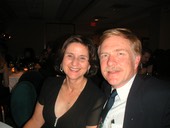Our third day in Barcelona started after a great night of sleep. It helps recover from jet lag dramatically if you can sleep through the night. We met up with our friends from Memphis and headed off for lunch. They were fresh off the plane so were feeling the effects of being cramped in an airplane seat overnight. We found a nice tapas restaurant and shared a variety of dishes (Russian potato salad, fried fishes, shrimp, ham and cheese and sausage and cheese on mini-baguette, cheese, and more). It was quite good.
After lunch we headed for the Sagrada Familia, one of the signature places in Barcelona. Pictures really don't do it justice. The aerial pictures you can find on line are spectacular.
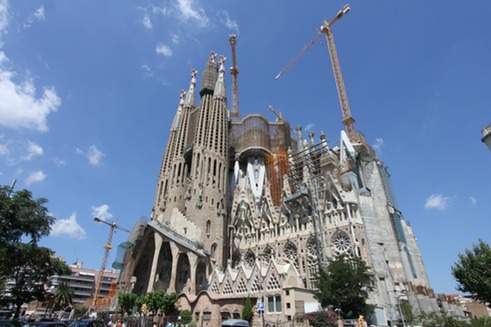
The famous Barcelona architect, Antoni Gaudí, worked on the church from its start in 1882, until he died 40+ years later. The Spanish civil war caused a 30 year hiatus in the construction. Work was restarted in 1954. His models and drawings were mostly destroyed in the war and had to be reproduced by one of his associates. It is scheduled for completion in 2026. It currently has 8 towers. When done, it will have 18: 12 for the disciples, 4 for the Evangelists, one for Mary, and one for Jesus. The Jesus tower will be 60 meters (196 feet) higher than the others and will have a cross on the top.
Some pictures from our visit.
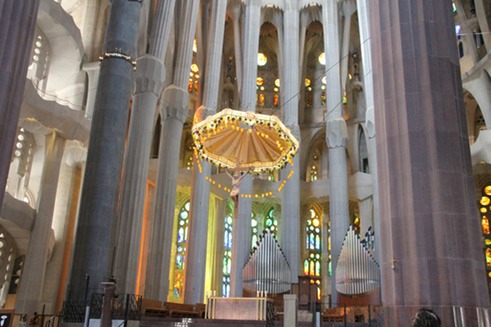
The altar and the pipe organ.
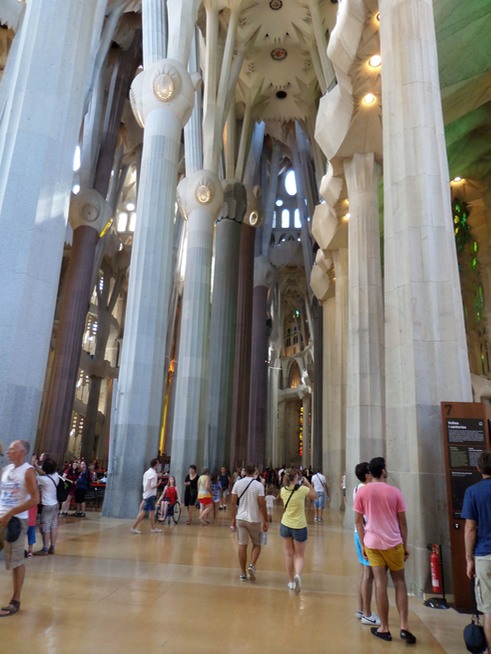
Looking toward the back of the church.

If you look carefully you can see the pillars are slightly curved. That is to provide the strength necessary to support the roof. To determine the curvature, Gaudí made upside string models of the cathedral using little bags of sand to simulate the weight. A not so good picture of the recreated string model is at the right. The model is in the bottom 2/3s of the picture. In the top is a view in a mirror which inverts the model so you can imagine the cathedral right side up. This is a very clever engineering trick when you remember there were not computers of even calculators in the late 1800s when the design was done. Today, computers model the church and models are made using 3d printers. Our guide speculated that the church had the first large scale 3d printer in Spain.
The detail and forethought in the design is incredible. Just one example is the skylights at the top of the cathedral (visible in the picture above). They are designed as hyperbolic surfaces allowing the exterior light to efficiently illuminate the interior. The outside is covered in exquisite sculptures showing the life of Christ. His birth and nativity are on side of the church (the older side) and his death on the other.
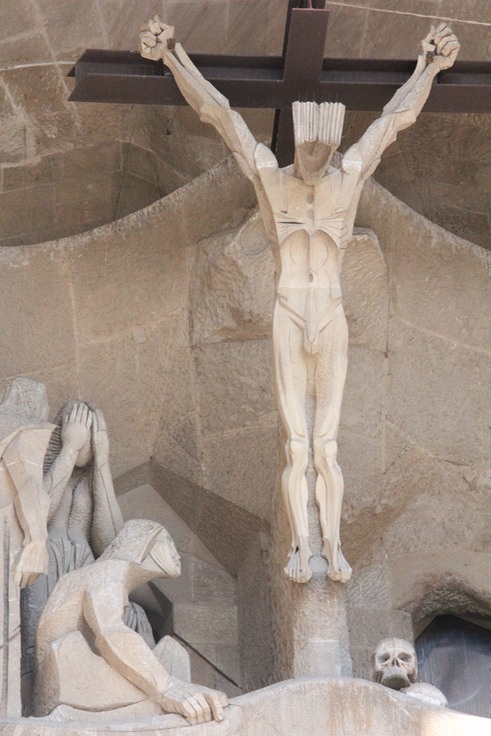
Jesus on the cross. Note the skull at the base of the cross.
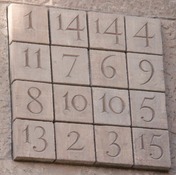
The 4X4 square of numbers on the building is interesting. THe columns, rows, diagonals, corners, center 2X2 square, and other combinations all sum to 33 (the number of Jesus' years on earth). Chuck (the nerdy math major) found it fascinating. Try it out.
We could go on and on. If you are ever in Barcelona, this is a must stop. It might even be worth a special trip to see it, especially when it is finally completed. We plan to make it back in 2026.
More about day three in next post.
